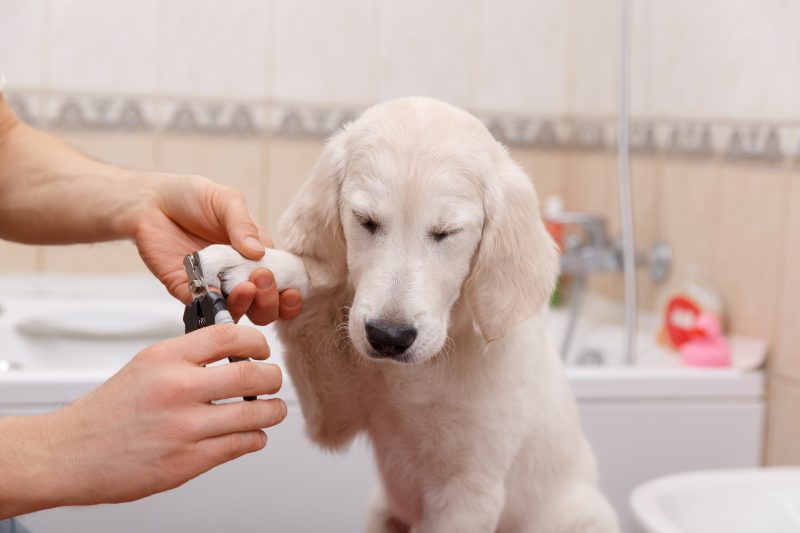Do you have a dog or a cat that despises having their nails trimmed? Do both you and your pet dread nail trims? It doesn’t have to be this way! Toenail trims should not be a traumatic and fearful event. There should be no need to force your pet to stay still and have them struggle throughout this procedure. Even if you have your pet’s nails trimmed at a local pet store or veterinarians, it is ideal to work with them at home to help your pet remain calm and relaxed during nail trims.
We can train animals to love procedures and other things that they dislike by using counterconditioning methods. First off, let’s go through what is meant by counterconditioning and the two types of counterconditioning training methods that we can use. The first, classical counterconditioning, is where we train the pet to associate a certain thing or activity with a positive emotional state. In other words, we train the pet to associate a nail trim with food, treats, petting or play.
We usually start by desensitizing the pet to the handling or stimulus (nail trimmers) at a level that the pet barely notices and accepts, then slowly build the level. The goal is to work up to the pet not even noticing or be bothered by the entire nail trim. The second type of training is operant counterconditioning, this is where we train our pet to perform a behaviour that is incompatible with the undesired behaviour. In other words, we reward and treat a calm, still pet while we perform the nail trim.
Step by step counterconditioning methods:
- Using classical counterconditioning, first get your pet used to having their feet touched. With a puppy or small dog, this might be easiest to have them placed on their back on your lap. For large dogs or adult dogs, it may be easier to have them lying on their side or remaining seated. If your pet is resisting these positions, first start by training them to be comfortable on their side, back or sitting first before moving forward.
- Next, touch their feet while giving treats at the same time. Then stop touching their feet and stop giving treats simultaneously. Repeat.
- Once your pet is consistently comfortable with having their feet touched while giving treats, slowly work up to applying soft pressure to each individual toe while giving treats. Again, stop touching the toes and stop giving treats simultaneously. Repeat.
- Using operant counterconditioning, reward after the dog holds still for handling. Once your dog has grasped of the first 3 steps, begin to handle the feet without giving treats. As soon as your stop touching their feet, reward your pet for holding still.
- Finally, add the toenail trimmers. If your pet reacts to the sight of the clippers, this additional step may be required. Introduce the clippers and treat for your pet remaining calm at the same time. Remove the clippers from sight and stop treating simultaneously. Repeat. (if your pet has no adverse reaction to the sight of the clippers, skip this step)
- Clip 1-2 nails and then reward for calm behaviour BEFORE your pet struggles.
It is important to note that if at any time your pet is struggling or resisting, you are moving too quickly. Go back a step and try again. These steps do not have to be completed in a single session. Work up to the nail trim slowly. This may take several days to weeks depending on your individual pet. Keep training sessions short – no longer than 5-10 minutes each.
Most importantly – move slowly and keep working on it! Training is a slow process but can be a very rewarding one. If you follow these steps, you are on your way towards a stress-free nail trim for you and your pet!
If you have any additional questions, please contact a member of your veterinary team for further helpful tips!
Written by Dr. Meagan Barrett, DVM, BScH. Animal Biology




